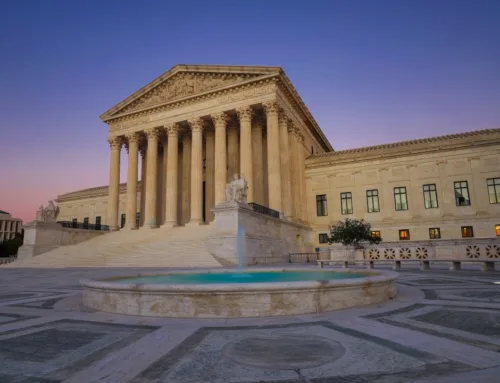The Cost Of Trump’s Tax Plan: Sapping Clean Energy And 790,000 Jobs
June 23, 2025
While the U.S. House of Representatives has passed a Trump-endorsed tax bill that rolls back clean energy incentives, the Senate’s refusal to support it as is offers a temporary reprieve. But buried in this legislation is a deeper threat to America’s clean energy economy—one that could derail innovation, job growth, and climate progress across red and blue states alike.
The bill is causing a stir because it wants to keep the tax breaks from the 2017 bill that the president had during the administration’s first term. But here’s the catch: it’s trying to undo all the progress made under the Biden Administration when the Inflation Reduction Act was passed. This proposed bill doesn’t just abolish the incentives for the future; it also takes back the money that’s already been set aside or approved for renewable energy projects. This is causing a lot of trouble in boardrooms and construction sites nationwide.
According to an E2 and Atlas Public Policy analysis released in May, over $14 billion in projects have already been delayed or canceled due to uncertainty since the law was passed in 2022. Additionally, the bill would reduce the investment tax credit provided to renewable energy projects. If a project costs $100, it would receive a $30 credit upfront to encourage the development of solar and wind farms.
“We have a product that competes with natural gas and coal, making them less profitable. So, reversing the IRA will make us grow less, but we will still be an ongoing company; it doesn’t kill us. It restricts our growth at a moment when the grid needs these projects because of so much incremental demand from AI and digital computing. Renewables are here to stay. We compete on price. All we ask is an orderly wind down of the subsidies—not pulling the rug out from under it, because no industry appreciates that,” says Jorge Vargas, CEO of Aspen Power, in a virtual chat with me.
Consider Aspen’s completion of 10 solar farms in Pennsylvania. With a combined capacity of 42.5 megawatts—enough to power 8,500 homes with electricity each year—these projects generate long-term rental income for local landowners and enhance regional infrastructure. They have also created over 800 local jobs, excluding those related to engineering and procurement firms. The Solar Energy Industries Association said the sector employed nearly 280,000 people nationwide in 2023, and in 2024, it generated $70 billion in private investment for the American economy.
Energy Innovation,a nonpartisan climate policy think tank, estimates that if Trump’s tax bill goes into effect, the country could lose 790,000 clean energy jobs by 2030. For instance, in Texas, the repeal of the IRA is projected to lead to the loss of over 115,000 jobs by 2035, along with a $20.32 billion decrease in the state’s GDP. “Texas, California, Pennsylvania, Florida, and Georgia stand out as the biggest losers from IRA repeal due to their poor combination of lost jobs and increased household energy costs.”
The Credit Brings In Deals
The main target is Section 45X, the Advanced Manufacturing Production Credit. This credit has helped America bring solar, battery, and wind supply chains closer to home. It’s attracted billions of dollars in investment for states like Georgia, Texas, and Ohio, often in Republican-led areas. Trump’s bill would eliminate these credits, freezing hiring and stopping factory construction in the middle of projects.
Electric vehicles are also in the crosshairs. The bill would ditch the credits for them, although these breaks would be available for U.S.-made cars. However, policy experts warn that many parts inside the vehicles are foreign-made. Given the global supply chain, it is nearly impossible for a car to be wholly produced in this country.
Meanwhile, the tax bill would also nix the federal tax incentive under Section 30C, which encourages the installation of electric vehicle charging infrastructure. The credit reduces the cost by 30% and is now available through 2032.
“Prematurely eliminating 30C will take options away from drivers, especially in rural and underserved communities where fueling choices are already scarce,” says Jamie Hall, Director of Policy for EV Realty, in an email. “This abrupt policy shift will slow EV adoption, increase pollution levels, and threaten construction, engineering, and electrical jobs across the country by pulling the rug out from under projects already under development.”
Then, there’s the potential elimination of the 30% investment tax credit for solar installations. “We need a stable regulatory framework,” says Aspen Power’s Vargas. “Don’t take a wrecking ball to it; instead, use a scalpel.”
NextEra Energy, First Solar, and Sunrun are among the clean energy and solar companies that could be impacted. At the same time, IRA incentives for battery manufacturing and domestic sourcing have bolstered Tesla’s margins and U.S. production scale, all of which would disappear if this bill passes.
The Impact On Energy Markets?
Trump defends the legislation as a way to cut federal spending and return to “free market principles.” He reasons that the energy market should thrive by rolling back clean energy incentives. But here’s the catch: the fossil fuel industry still gets many subsidies, while the more nimble clean energy sector, which is growing faster and creating more jobs, would be left to fend for itself.
Fossil fuels benefit from substantial direct and indirect subsidies. Oil Change International calculates that the United States spends about $20.5 billion annually on fossil fuel subsidies. Meanwhile, the U.S. Energy Information Administration reported that federal subsidies for renewable energy totaled $15.6 billion in 2022.
CEO Vargas says the biggest irony is that the landowners who hosted his solar projects voted for Trump in 2020. They are now some of the leading green energy advocates; solar farms provide the revenue they need to keep farming and the power to energize their complexes. Although Trump may have convinced Red districts of a “Green New ‘Scam,’” many now champion the cause because they profit.
“Leasing our land for solar has brought financial stability to our fourth-generation family farm,” says Judy King, a Mercer County, Pa., property owner, in an email. “It provides a reliable yearly source of income that helps us plan for the long term—covering expenses, making improvements, and ensuring the land remains productive and intact for future generations. We didn’t have strong opinions about renewable energy before this project.” But they learned about solar and voted to proceed, which they say also serves the environment and the community.
The economic benefits are one aspect. The environmental advantages are another. The Rhodium Group estimates the U.S. will produce 500-730 million metric tons of additional greenhouse gases by 2035 if Congress repeals parts of the IRA.
Even if this tax bill is revised, it sends a troubling message: policy commitments to a cleaner, more competitive energy economy can be reversed overnight. Investors need certainty, innovation requires stability, and U.S. policy in the next-generation energy economy must incorporate both. The practical effect of such sudden strategic changes is that they will impede the transition to green power, making energy more costly and much dirtier.
Search
RECENT PRESS RELEASES
Related Post




